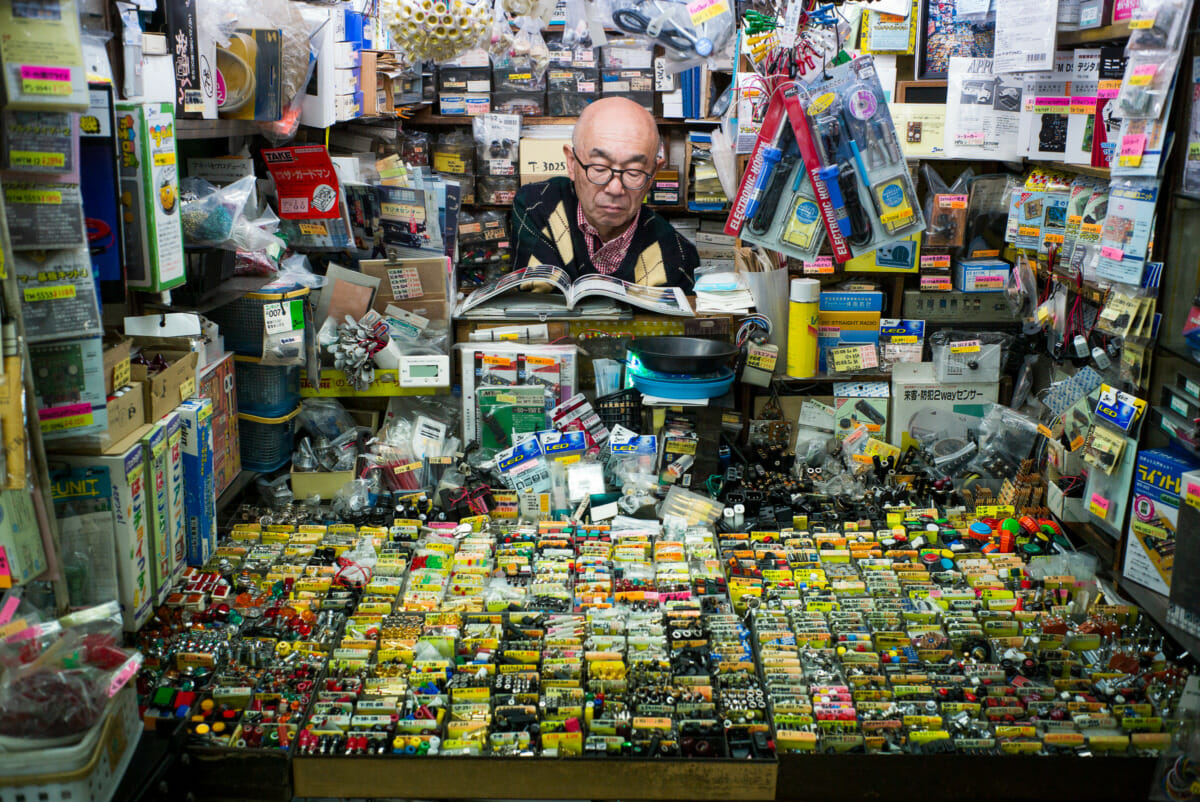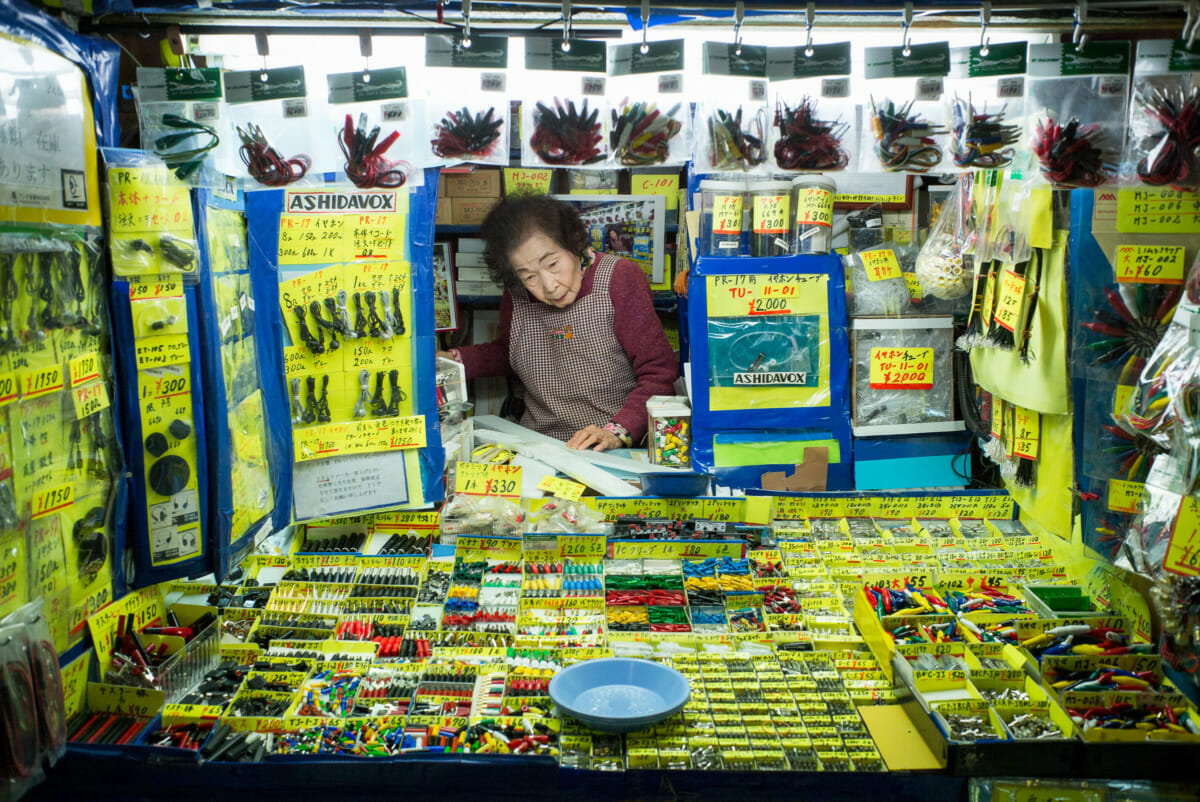Tokyo’s Akihabara district got its Electric Town moniker in the post-war period when handmade radios and their components were sold, often illicitly, on the street. A surprisingly humble start for a place that became the capital’s go-to spot for all things electrical.
Over the following decades the area stayed true to its name, but in the 1980s it began shifting more towards gaming, anime and otaku culture in general. A scene that Akihabara went on to fully, and very successfully embrace, making it forever synonymous with subcultures that have now gone mainstream.
It’s a change that is obvious the moment you leave the station, but at the same time there are still plenty of electronics shops in the area, and even the old-style component side of things hasn’t completely disappeared, meaning it’s still possible to get your hands on whatever obscure, or fiddly little part you could ever wish to find. An element these two previously posted photos — taken in 2018 and 2019 respectively — amply prove. Almost comically small businesses that in so many ways hark back to those very early days of radios, market stalls and a distinctly DIY approach.
Taken before either of those photos, however, is the shot below, which predates the earlier one by 4 years. Long forgotten, it’s an image I found recently when searching for something else, but seeing it again, it somehow seems a lot older. A moment — to my eyes at least — that almost manages to straddle Akihabara’s early days, and the world famous maid cafe anime mecca it has become.



ellen says
I love those little stores so much! 🙂
Lee says
Likewise. They never cease to amaze me every time I walk past. And when I’m in the area I can’t resist walking past!
Ron says
Yeah, that last picture is cool. But I would think it’s more a reflection of the dumpster diver culture across the world rather than the Akihabara culture (old or new). BTW, I really enjoyed my visit to Akihabara when I was in Tokyo about 15 years ago, it was super cool for a techno person. Great photo!
Lee says
Cheers. Certainly makes for quite a contrast, but yeah, that’s a good call.
I can imagine. The anime, maid cafe etc element has probably increased since then, but you’ll be happy know there’s still a load of electronics to see and enjoy.
Richard says
Thanks for these photos. It is great to see Mom and Pop stores still operating.
My wife and I bought a Nikon camera in Akihabara in 1971…..for maybe 50% of what it would have cost elsewhere. Then we bought our fist tablet there in 2009.
Lee says
You are very welcome. Those little shops are incredible. I can’t help but be amazed every time I pass them.
Blimey, that’s quite a time gap. Quite a gap in regards technology bought too! It must have been a very different place indeed back in the early 70s.
Richard says
To be sure, technology was very different in the ‘70’s!! Eg, I also bought a reel to reel tape recorder there which I took back home to the USA in 1971. It was a big boxy thing that I used to play music on in lieu of record albums.
cdilla says
That last photograph really caught my eye this time. The Danish Bar appears in April 2015 and vanishes not long after so my guess would be around then. Around that time I saw a documentary about the homeless recyclers of Tokyo and that guy could easily have been one of the ones featured. I must look it up – I was doing reviews for NHK at the time and so did a fair write up on each program and must have them somewhere. That one certainly stuck in my mind. Ex-successful businessmen now homeless but still too proud to ask for help – finding a “living” collecting cans and cardboard for recycling.
Not everything is polished glass, neon lights and plastic idols.
LAObserver says
Your words are well noted. Reminds me of the often used description of Las Vegas, “The city that keeps re-inventing itself.”
Lee says
@LAObserver That definitely rings true for Tokyo.
@cdilla There are certainly a lot of fellas somehow surviving on collected cans, but goodness knows how many they need to get even a small amount of money. Be interesting to see if that man is one of those featured. As for the photo, it was taken the previous year. October 25th 2014 to be exact.
Jacob says
SANYA, Tokyo, Broken city. Probably not the documentary you are remembering, but nonetheless a very interesting one. You can find it on youtube. The picture immediately reminded me of the men of Sanya and their fate.
Lee says
Thank you, that sounds very interesting. Never heard of it before either.
cdilla says
Thanks for the heads up on that documentary. An hour well spent watching that. Especially once I had turned the subtitles on 🙂
That quote one of the guys had written on a board “The authorities think of the homeless as a waste of life”… awful to feel that that is the case. Even worse if it actually is the case.
LAObserver says
Wow Lee. Both your text and the photos in this posting are amazing.
That statement, “…subcultures that have now gone mainstream”, is worthy of a whole series of postings. (If not an entire website.)
Lee says
Thank you very much, that’s really good to hear. And yeah, that really would. Tracking such things from a niche beginning to mainstream success would be fascinating.
Rogerio Prado says
Love this photos so much.